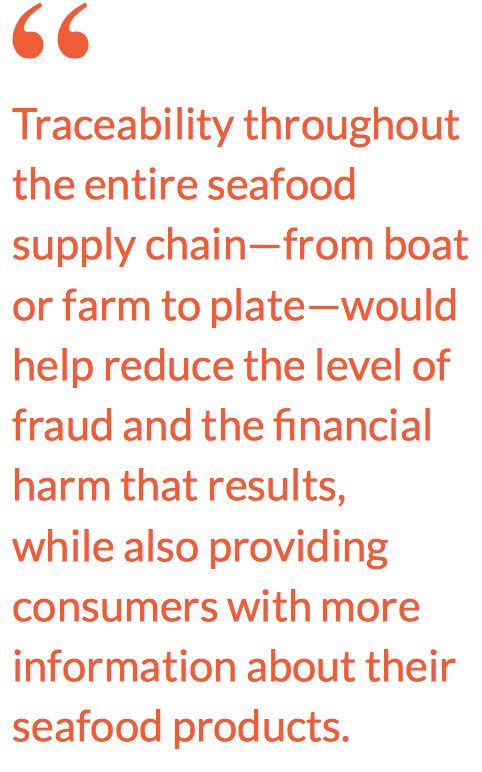
Addertje onder het lobbygras.
Het Financieele Dagblad papegaait een lobbyrapport van Oceana, de Amerikaanse lobbyclub tegen vrije visserij in Brussel. Die beweren dat visfraude een steeds groter probleem is: 1 van de 5 vissen zou een verkeerd etiket hebben. Vis op je bord, die van een andere soort zou zijn met lagere marktwaarde. In Europa bleek in 2015 echter maar 1 op de 20 verkeerd gelabeld, wanneer je de referenties checkt in het Oceana-rapport. Wel moet je bij restaurants oppassen bij wat voor vis je krijgt, volgens een inventarisatie in Duitse eetgelegenheden: die verkopen nogal eens panga als schol.
In Nederlandse supermarkten blijkt bij een steekproef in Marine Policy in 2016 naar kabeljauw dat er GEEN visfraude was.Oceana is een door Amerikaanse stichtingen waaronder het Rockefeller Brothers Fund gesponsorde lobbyclub die vrije visserij wil insnoeren en die lobbiet voor zeereservaten. In die context moet je dit rapport dan ook zien. Voor een goed beeld van het probleem moet je dus niet dit rapport citeren, maar de originele studies natrekken.
Tot zover de samenvatting: hieronder de uitleg en de mee-naar-huisneem-boodschap is: geloof nooit wat dagbladjournalisten je serveren. Als iets goed lijkt/van de juiste autoriteit schrijven ze het klakkeloos over.
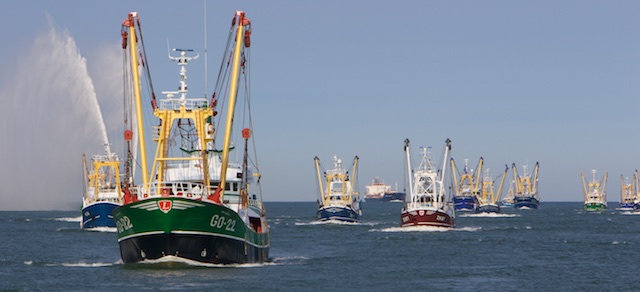
Lekkere vis koop je het beste direct van de afslag, aan de vissers ligt het bij ons niet
Opgeblazen claims Oceana
Oceana citeert een onderzoek van de Europese Commissie in 2015. Die voerde een inventarisatie uit naar visfraude, in reactie op de paardenvlees-fraude.
This is the first EU (+EFTA) wide coordinated testing programme on fish species substitution and the Member States sampled in total 3906 samples from over 150 different white fish species from all stages of the food chain. This represents a very broad species target group in comparison to other studies of this kind. The declared species was confirmed in 94% of the samples taken. (dus 6 procent er naast) The overall non-compliance is lower than the levels of non-compliance in white fish in many of the other more limited testing programmes in EU Member States, although for certain species the levels are still quite high.
en
The aggregated results can only give us an idea of the situation concerning mislabelled white fish on the EU market. Based on the information gathered in this plan it is not possible to give any estimate of how many cases of intentional violations perpetrated with the purpose of financial gain this represents, as opposed to just bad or ill-informed practices.
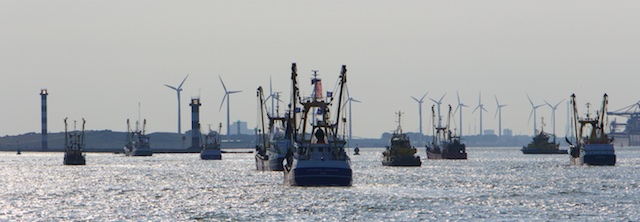
BIj de vissers werd geen fout gevonden, dus geen extra spionage nodig
Terwijl Oceana schrijft:
The average EU mislabeling rate in studies published over the past 12 years was 28 percent, while the average, normalized (or weighted) to sample size was 14 percent.
Terwijl ze studies van kwal-afgeleide producten in Bengaalse en Aziatische supermarkten aanhalen in Italie waar de mislabeling op 89 procent loopt. Wat logisch is, want Bengaalse asielzoekers in Italie zijn geen bioloog die tot de ondersoort nauwkeurig labelen. Dat is wel belangrijk omdat je zo het gemiddelde opkrikt. Dat glibberige spul valt ook niet onder EU-regulering voor soortrapportage.
Hoezeer ze bij Visserijnieuwspunt.nl ook een hekel hebben aan Panga, dat is niet wat het rapport meldt:
Although Europe now accounts for most of the cases of pangasius substitutions in our global analysis, the most recent large, pan- European study found pangasius replacing only 3 percent of the 3,900 samples.
Oceana claimt dit:
- A 2015 German study found about half of the samples sold as “sole” to be lower-value fish upon testing.34
Wat schrijft die Duitse studie dan van Kristina Kappell? Die claim van ‘de helft’ blijkt dan alleen op restaurants te slaan die panga-rotzooi verkopen voor betere vis, maar niet op de handel
Altogether, 47 common sole dishes were ordered incognito in 24 restaurants and 98 whole fish specimens or fish fillets were purchased from 35 different shops (including wholesale dealers and speciality markets). Species identities were determined by cytochrome b gene sequencing and isoelectric focusing of sarcoplasmic proteins, which are official German methods for fish species identification afforded by §64 of the German Food and Feed Code (LFGB). 50% of the restaurant samples were shown to be substituted by species of lower commercial values, such as catfish species (Pangasidae), Senegalese tonguesole (Cynoglossus senegalensis) or Portuguese sole (Synaptura lusitanica). As almost all samples from the retail were shown to be authentic – only one sample was identified as lemon sole (Microstomus kitt) – we presume that fraudulent substitution is performed by restaurant owners and staff rather than by persons responsible for fishing, manufacturing or retail.

Geen extra spionage nodig, je moet wel bij een restaurant en visvraat-zaak goed opletten. Het beste koop je gewoon direct vers van de afslag
Dus wat is nu het probleem?
Oceana schrijft
A2014 study in Spain found that the more abundant ling were being mislabeled as the highly overfished cod.56 Two other studies since then have found similar ling-for-cod substitutions.
Allereerst: kabeljauw is in haar belangrijkste vangstgebied rond de Noorse kust en Russische wateren maar ook Skagerak niet (meer) overbevist maar juist een bloeiende populatie, en ook de populatie in de Zuidelijke Noordzee is herstellend. Daarnaast wat is die ling? Een kabeljauw-achtige, met inwisselbare smaak en textuur voor kabeljauw volgens Wikipedia:
The ling is edible; it can be considered interchangeable with cod in either its fresh, salted, or dried forms. The salted roe of the ling is considered a delicacy in Spain and is known as huevas de maruca.
Een nieuwe studie van Amanda Brechon in Marine Policy toont dat mislabeling van kabeljauw in Nederland, Noorwegen en Belgie non-existent is, het is een probleem in Estland:
A total of 401 cod products from a range of different supermarket retailers in each of nine countries bordering the North Atlantic Ocean were purchased and genetically identified. The countries sampled were grouped into primarily cod-importing or cod-producing states, and belonging/not-belonging to the European Union. They comprised the United Kingdom, Belgium, the Netherlands, Denmark, Estonia, Iceland, Norway, Sweden and Canada. Estonia showed the highest incidence of mislabelling, with 59.4% samples mislabelled, followed by Denmark with 18.6%, Canada with 7.3%, Sweden with 4.4% and finally the United Kingdom with 2.4%.
Koolvis werd vaak als kabeljauw verkocht en heek.

Een verse schol herken je wel in de vitrine bij de goede zaak
Ook MSC af en toe in de fout
We hebben in Nederland wel een zaak gehad met ‘omkatten’, waarbij Chinese schar als schol werd verkocht. Dat er gerotzooid wordt is helaas af en toe waar. Maar je kunt als bron beter geen actiegroep nemen, die lobbiet voor greep op vissers. Terwijl de problemen vooral bij restaurants zitten en nauwelijks in de handel. Dat Nederland er bij kabeljauw positief uitspringt, het kan door certificering komen: dat wil ik als MSC-basher dan toch best kunnen toegeven. Voor dit soort zaken is certificering ooit opgezet.Toch blijkt ook certificering niet waterdicht. Ook bij MSC komt mislabeling voor volgens Oceana:
Mislabeling rates ranged from a low 0.5 percent in a survey of 218 products certified by the Marine Stewardship Council in 11 EU countries
En vraag altijd bij je visboer van welke vis je kibbeling is. Voor je het weet krijg je panga-kibbeling.
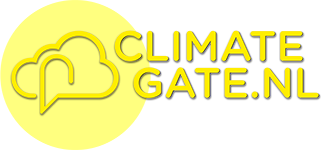

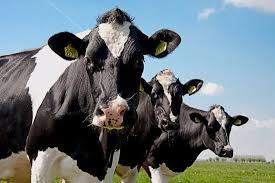


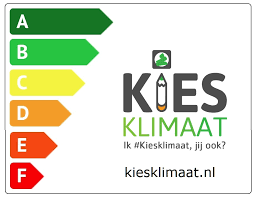
Geef een reactie